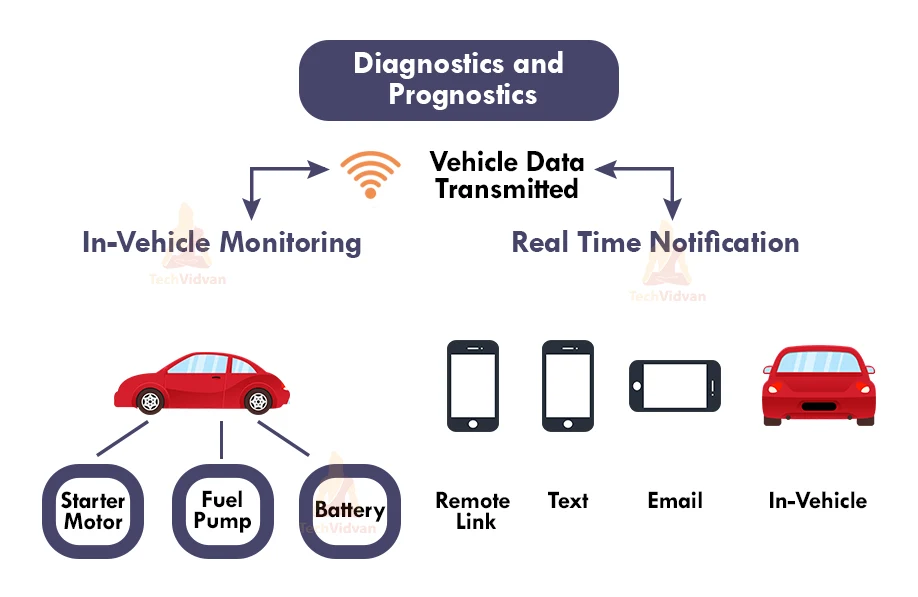Role and Applications of IoT in Transportation
IoT offers solutions in various layers of transportation. It improvises communication, authority and information distribution. IoT offers integration in personal, public and commercial vehicles. IoT upgrades elements of transportation including engine, fuel, destination and routes, parking and much more. The following article discusses in detail the applications and role of IoT in transportation. Let’s begin
Role of IoT in transportation
The transportation is an intermediary that connects supply chains to users via logistics. It plays an important role in connecting consumers and goods. It is made up of factors such as availability, logistics and movement.
IoT helps in integrating the entire management process by offering benefits such as automobile tracking, safer route optimization, distance coverage and so on.
An Intelligent Transport management system benefits the travellers, the automobile industry, infrastructure improvisation, and thus the core of any organization.
Below are a few of the application of IoT in transportation:
Applications of IoT in transportation
1. Rail and mass transit
Currently, the systems in railways use older methods of technology which makes processes slow. Iot systems deliver better performance systems, monitoring and control. This gives rise to better execution, issue handling and improvisation.
Mass Rapid Transit or MRT faces the problem of being an option rather than being a larger service. IoT is helping integrate MRTs to produce better standards and in increasing the outturn. IoT enhances services such as scheduling timings, customer care, quick response, management and cleanliness.
2. Commercial transportation
Commercial transportation companies rely heavily in satisfying the needs of their customers. By adopting new technologies, companies can change profit margins by a large percent. Cargo monitoring systems help track the package from shipment to delivery. They provide real time location of packages and notify the company in case of an emergency. If there is a breach in the code of conduct, the user is immediately notified and the authorization takes further action.Thus, Iot offers a constant flow of information in commercial transportation.
3. Transport management system
Businesses are quickly adapting to the new technologies in order to increase efficiency and performance. Iot is helping in transportation management by introducing self-driving trucks. These trucks connect to the warehouse, delivery addresses and checkpoints. IoT is helping collect, analyze and process information regarding stock, loading, unloading, inventory and workforces. RFID tags send location details through clouds so customers can track their shipments and packages.
4. Road
IoT sensors on roads submit real time analysis and information about the situation of traffic on the roads to help avoid congestion and minimise road incidents. IoT is helping reduce accidents, road rage and other road mishaps. Road sensors can help create diversions to make way for an ambulance, fire trucks and police vehicles.
5. Transportation monitoring system
IoT in transportation monitoring is easily meeting the requirements, reducing the risks and improving the quality. Unlike the regular transportation management systems, the connected supply chains contain sensors that connect to the internet to provide real time information of the cooling condition in the warehouse and truck, the traffic conditions, information about the driver and vehicle and so on. The sensors notify the admin about the conditions simultaneously.
6. Asset management and remote area surveillance
Iot based technologies can help monitor remotely the condition of inventory stock. Supply chains integrated with AI and IoT reduce inventory costs by playing IoT devices in warehouses that deliver real time analytics on the situation of the product. A staff head checks up on the situations and updates on the condition from a different location.
Real Time inventory tracking accelerates the Supply chain management and thus produces faster and quality results.
7. Automobile
The IoT industry improves the functionality of regular cars. “Smart cars’” integrated with Iot technology offers the same functionality as any regular car, in addition it improvises the features of a traditional car. “Smart cars” have sensors that sense the environmental changes around them, provide real time information about roads and traffic, thermostats to adjust the temperature automatically, child lock features and so much more.
Similarly, other automobiles with Iot technology improve the performance of traditional automobiles.
8. Information and Entertainment in Automobiles
IoT applications allow users to have entertainment functionality in automobiles. Users use Automotive Telematics to monitor the condition of their car remotely. Smart-phone enabled dashboard promises driver safety. Cameras and sensors located externally monitor the condition of the car and transfer information over an app.
GPS devices track the exact location of a car and help users in case the car has been stolen. Voice-command-based-applications allow users to change music, lights and temperature inside the car.
9. Improved safety
IoT helps in improving road safety and reducing road accidents. Webcams on highways record the speed of a vehicle and if the vehicles exceed the specified limit, authorities are immediately informed to take relevant action. Security systems also track accidents and inform the ambulances to reach at the place of accident immediately.
10. Operational performance
IoT not only increases the quality of production but it also increases the performance of operations. In traditional factories, factory workers do regular machine checks which is not only time consuming but it also costs a lot. With IoT in industries, the machine performs automated routine checks and alerts authorities in case of potential threats and damages.
11. Inventory management system
Smart Inventory management systems provide real-time information about the condition of the inventory remotely. The supply chains generate and collect large amounts of data and thus create an integrated framework.
IoT contributes heavily to logistics, inventory management and supply chains. The industry is blooming with large profit generation.
Summary
So that was it for this article. Here, we have seen the role of IoT in transportation and various useful applications of IoT in transportation.

